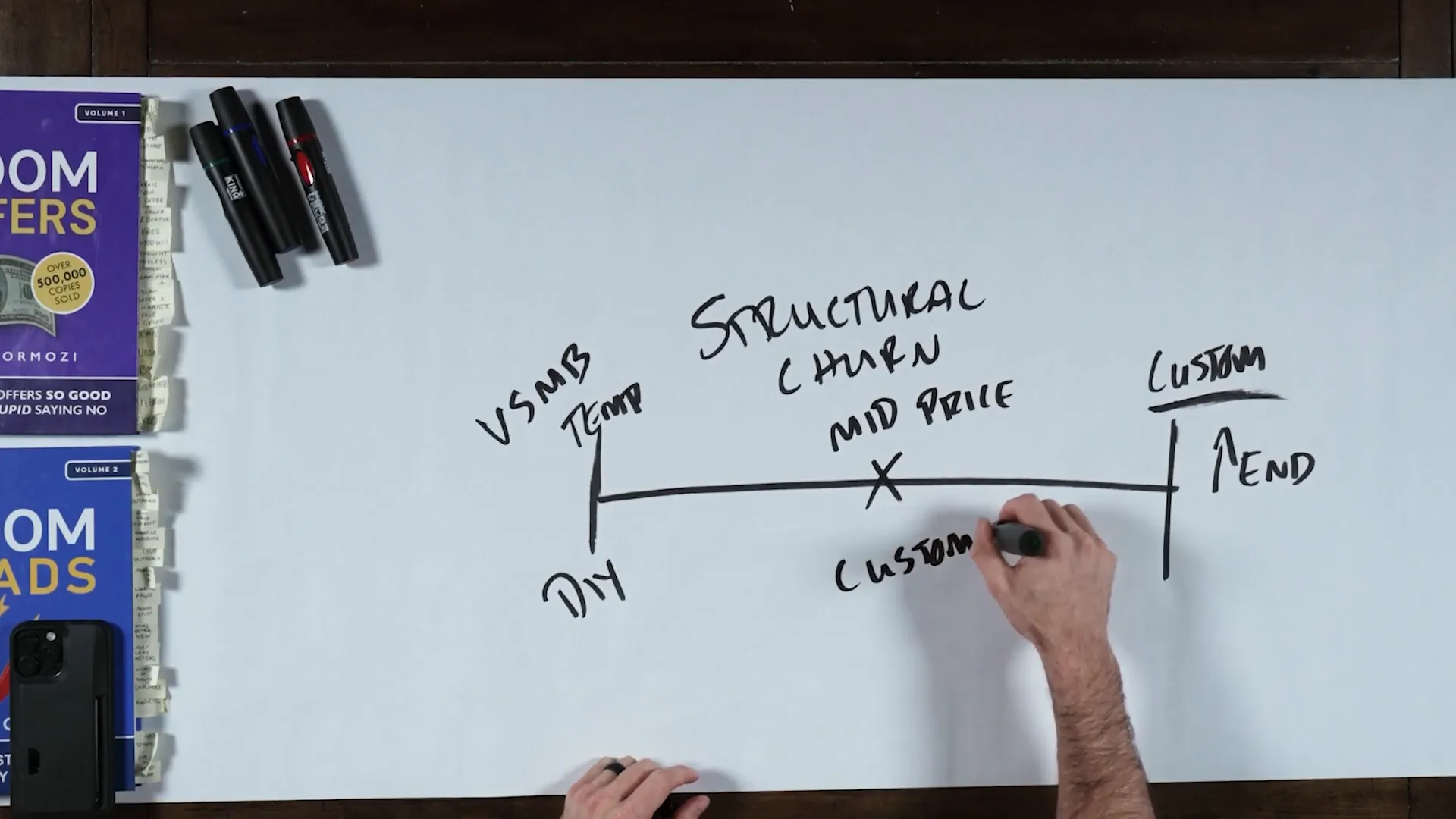Business Was Hard Until I Understood This
In the world of business, many entrepreneurs find themselves struggling to reach their potential, often due to one major reason: the type of customers they are serving. This article dives deep into understanding the concept of "sucky customers," why they can hold you back, and how to transition to serving a more profitable clientele. Drawing from insights shared by Alex Hormozi, founder of Acquisition.com, we will explore actionable steps that can lead to business growth and sustainability using GFunnel’s all-in-one business ecosystem.
Understanding Sucky Customers
Many agency owners cater to small business owners, often charging around $1,500 a month for services like social media marketing. While this might seem lucrative initially, most agencies plateau at a revenue of around $1 million to $3 million annually. The crux of the problem lies not in what they are doing, but in who they are selling to. When you have the wrong customer avatar, your business's volatility mirrors that of your customers. If your customers are small businesses, a bad month for them can lead to immediate cancellations of services, making it difficult for you to maintain a stable income.
To illustrate this, we can compare building a business on small customers to constructing a castle on sand; it's a shaky foundation. When the tide comes in, the castle washes away. Thus, if you want to scale your business effectively, you must consider transitioning to a clientele that offers more stability and profitability.
The Importance of Customer Selection
When we look at the most successful agencies globally, such as Ogilvy and Mathers or VaynerMedia, they primarily serve Fortune 100 and Fortune 500 companies. These clients require high-quality service and are less likely to cancel due to temporary financial strains. In contrast, small business owners often make decisions based on immediate cash flow, which can lead to high churn rates.
This situation is known as structural churn, which refers to customers leaving not because they dislike your service, but due to their business circumstances. For instance, a friend of Hormozi’s who operated a CRM for gyms reported a monthly churn rate of 3%. The majority of these cancellations stemmed from gyms going out of business, showing how structural factors can impact customer retention.
Identifying the Right Customer Profile
One of the first steps in transitioning away from sucky customers is to conduct a customer profitability analysis. This involves examining your current customer base to identify which demographics are most profitable. Here’s how to get started:
- Demographic Analysis: Identify who your best customers are. What do they look like? What are their revenue levels?
- Behavioral Insights: What actions do your best customers take that lead to successful outcomes? Are there common traits or behaviors that differentiate them from your less profitable clients?
- Outcome Evaluation: Assess the results your top customers achieve. This will help you identify patterns that can inform your new customer profile.
Once you have this data, you can redefine your Ideal Customer Profile (ICP). This is crucial for aligning your business strategy with the right clientele.
Transitioning to Better Customers
To transition from serving less profitable customers to more lucrative ones, consider the following strategies:
1. Niche Down or Niche Up
By focusing on a narrower target market—whether that means specializing in a specific industry or offering premium services to high-end clients—you can better serve your customers. This focus allows you to charge appropriately for the value you provide.
2. Implement a Qualification Process
It's vital to develop a qualification process that helps you identify the right customers. This means saying no to clients who do not fit your new profile, even if it feels uncomfortable. Remember, saying no to small money today can lead to big money tomorrow.
3. Adjust Your Offerings
Ensure that your services and pricing align with the expectations and financial capabilities of your ideal customers. For example, if your top customers are willing to pay more for premium services, adjust your pricing accordingly to reflect the higher value you deliver.
Operational Considerations
Transitioning to a new customer base may also require operational adjustments. You might need to streamline your processes or enhance your service delivery to meet the expectations of higher-end clients. This can lead to improved team morale, as employees will feel more empowered and less burdened by demanding customers.
Utilizing GFunnel for Growth
As you work through these transitions, leveraging GFunnel can enhance your business ecosystem. GFunnel offers a comprehensive suite of tools designed to help entrepreneurs connect, manage, and scale their businesses effectively. Here are some features of GFunnel that can assist you:
- Create an Account: Unleash your business potential with GFunnel. Connect, network, and thrive with our all-in-one platform.
- Automation Tools: Automate repetitive tasks to free up your time for more strategic decision-making.
- Customer Relationship Management: Use CRM features to better track and manage your customer interactions.
Conclusion
Understanding who your customers are and how they impact your business is crucial for long-term success. By transitioning to serving a more stable and profitable clientele, you can break the cycle of structural churn and position your business for growth. Implement the strategies outlined above, and don't hesitate to leverage platforms like GFunnel to streamline your operations and enhance your business's potential.
For more insights and to access your free scaling roadmap, visit Acquisition.com. May your desires be greater than your obstacles, and never quit on your journey to success!
